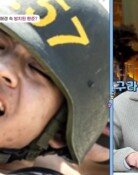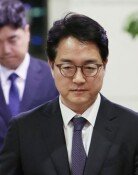Public afterschool programs should learn from Taekwondo gyms
Public afterschool programs should learn from Taekwondo gyms
Posted March. 07, 2024 07:52,
Updated March. 07, 2024 07:52
A is a working parent whose son attends first grade of elementary school this year. Right before the start of the semester, she was informed that the school opening had been delayed by two weeks due to facility construction. A was worried about whether to take a leave from work or ask her mother for help. It was the Taekwondo gym that saved A, however. The Taekwondo gym nearby decided to run all-day classes to the relief of parents in the neighborhood.
Taekwondo gyms provide top-notch customized childcare services. They even provide drop-off service to other hagwons (private institutions). They also teach jump rope, which is taught in elementary schools, as well as ball sports such as soccer and dodgeball. Many children take their first skiing lessons at winter camp hosted by the Taekwondo gym. Taekwondo gyms teach kids to practice for school physical exams and performances.
Taekwondo gyms have naming conventions: ' the name of the neighborhood + name of the university the director graduated from + hyo (filial piety) + Taekwondo.’ They are known to live up to their title. Sometimes, they host weekend sleepover camp programs geared to help develop independence. Children arriving home from camp often burst into tears having learned the lesson that they can’t have everything their way, being away from home.
I would not be exaggerating by saying that Taekwondo gyms have helped prevent Korea’s birth rate from dropping to zero and contributed to boosting women’s economic participation rate in Korea. “I think I speak with the Taekwondo instructor (who is around my kids at the gym) on the phone more often than with my husband,” said B, who has four children.
Starting this semester, the Ministry of Education introduced ‘Neulbom School,’ an after-school program for elementary school students throughout 8 p.m. The Ministry of Culture, Sports, and Tourism provides cultural arts and physical education programs to first graders participating in Neulbom School. As I looked through the program, my first thought was ‘the people that designed this program knows nothing about children’. Honestly, would children listen to ‘Stories by Grandma’? I burst out laughing when I came to the part that said Vice Minister Jang Mi-ran, whom most first-graders would barely know, would volunteer for a one-day event.
The participation rate of Dolbom after school care program, the previous version of Neulbom School, was only 11.5% as of last year. Why do public programs fail while Taekwondo gyms make it? Taekwondo gyms thrive because they know parents’ needs. Those who make the rare choice to have children want to live happy lives with their children. They wish to live in a world where they can come home every evening to have dinner together.
The government overlooks this point while emphasizing only ‘public care.’ It is arrogant to believe that the state can take over the role of parents. That is the reason why parents don’t feel that public childcare programs cater to their needs. If the government really intends to build success with the Neulbom School, they should start by investigating how Taekwondo gyms won the hearts of not only parents in Korea but also in the United States, Europe, and Taiwan.’







